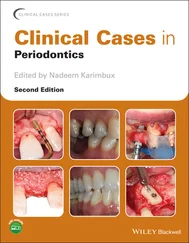A classification system to describe the site of origin and course of accessory canals within the furcation was proposed by Yoshida et al 152and modified by Paras et al 153as Type A (true), Type B (blind), Type C (looping), and Type D (enclosed) canals. Zuza et al labeled Type D canals as sealed canals . 146
ENDODONTIC-PERIODONTAL RELATIONSHIP
Over the past century, the pulpal-periodontal relationship has been a topic of controversy and extensively studied. From a periodontal perspective, it has been suggested that the cumulative effect of biofilm-induced pocket formation might cause pulp inflammation via exposed accessory canals. 147,154,155Nonetheless, a complete disintegration of the pulp may occur only when all main apical foramina are challenged by bacterial biofilm. 156
Conversely, Mazur and Massler demonstrated that the pulp condition could vary from almost normal to advanced degeneration despite the presence of periodontal disease. 157Their findings suggest that the periodontal status does not exert any great influence on the pulp and addressed possible systemic factors as the cause for pulp degeneration.
On the other hand, advanced stages of pulpitis can cause periodontal breakdown. 158–161As such, endodontic treatment often leads to healing of untreated periodontal lesions in the presence of a endodontic-periodontal defect and supports the idea that accessory canals may act as a passageway for endodontic irritants. 158,162,163
Cementiclesare defined as calcified spherical bodies (0.2 to 0.3 mm) composed of cementum lying free within the periodontal ligament, attached to the cementum, or embedded within it. 1,3–6It has been suggested that their formation is influenced by epithelial rest cells of HERS and only present on a tooth surface covered with cementum. 3,5True cementicles consists of a collagenous matrix intermixed with a noncollagenous ground substance. 6
Cementicles may enlarge by deposits of calcium salts from the connective tissue. These salts fuse with adjacent free cementicles and become embedded in the root surface during cementum deposition. 164,165According to Holton et al, cementicles are often observed in canines and molars with an overall prevalence of 34%. 166
The presence of cementicles has not been correlated with the pathogenesis of periodontal disease; however, root surfaces with cementicles might hinder mechanical instrumentation.
Cemental tearsare defined as a specific type of root surface fracture and characterized by the detachment of a cemental fragment. 2Cemental tears are a rare condition able to induce periodontal attachment loss 167–176and periapical tissue destruction. 177–179Partial or complete separations can occur along the dentin-cement junction or following cementum incremental lines from both exposed and unexposed root surfaces leading to cemental tears. 39,180,181
The occurrence of these cemental defects remains unclear due to its rarity. Retrospective data from a multicenter study in Taiwan reported that cemental tears are more likely to occur in mandibular and maxillary incisors (76.1%), among men (77.5%), and in patients older than 60 years (73.2%). 177A predisposition for these tears in a Hindu population has also been reported. 180,182
Müller and Zander hypothesized that the occurrence of cementum defects could be associated with the quality of cementum rather than differences in rate, speed, or lack of cementum deposition. 182Conversely, Moskow noted that these defects were located mostly at the coronal third of the cementum, serving as susceptible sites for calculus formation. 39Interestingly, he pointed out that cemental tears could be the result of inadvertent root gouging during mechanical instrumentation. Additionally, observations from Leknes et al noted that cemental tears can occur away from the gingival sulcus, suggesting that these fractures can elicit a rapid periodontal breakdown in noninfected environments. 167Hence, cemental tears can often be associated with traumatic occlusion or traumatic events. 2,167,181,183–188
Cemental tears are detectable clinically via very localized deep pocketing and radiographically (about 50% of the cases) with a localized radiolucency surrounding a “prickle-like body.” 170,177,185Further analysis showed that teeth with cemental tears were more likely to develop an abscess and be associated with pockets greater than 6 mm, a positive vitality test, healthy opposing teeth, and moderate to severe attrition. 177
If properly diagnosed, teeth with cemental tears can be satisfactorily treated. Treatment includes removal of the cemental tear, root debridement, pocket reduction, and/or regenerative procedures with or without endodontic therapy. 189A recent study showed that most of the teeth with cemental tears could be treated via surgical or nonsurgical treatments; however, teeth with cemental tears in the apical third had a worse prognosis. 190
Palatal Exostosis (Tubercles)
Exostosesare defined as benign bone growth projections outward from the surface of a bone. 1Palatal exostoses are bony protuberances that can cause surface irregularities, leading to periodontal pockets in the area of maxillary molars. Larato proposed a classification based on their anatomical appearance as Type A (small nodule), Type B (large nodule), Type C (sharp ridge), Type D (spike-like projections), and Type E (combinations of types A to D). 191
Several studies using human skull specimens have reported a diverse prevalence of palatal exostosis ranging between 30% and 56% ( Table 5-11). 191–193These subtle differences might be influenced by ethnic background and/or age. 192,193Most of the palatal exostoses (62%) are commonly found in the maxillary third molar area and directly lateral to and at a mean of 11.4 mm from the greater palatine foramen. 192The removal of these bony protuberances is often indicated to ensure proper flap adaptation during resective procedures. These can also serve as a potential source of autogenous bone for regenerative procedures. 192
TABLE 5-11 Prevalence of palatal exostosis
| Authors |
Prevalence |
| Larato 191 |
Overall: 30%Population: Mexican |
| Nery et al 193 |
Overall: 40.5%Population: European, Oceanic-Asiatic, African, and Mexican-Peruvian |
| Sonnier et al 192 |
Overall: 56%Population: Caucasian and African American |
Dental Materials and Tooth Position–Related Factors
IMPACT OF DENTAL MATERIALS
The periodontium can be affected by the different types and surface characteristics (eg, surface free energy and roughness) of dental materials. 194–197In a comparative study by Chan and Weber, 198150 crowns (50 porcelain crowns with aluminum-oxide framework, 68 porcelain-fused-to-metal [PFM] restorations, 13 cast gold crowns, 19 acrylic resin veneer crowns) and 242 intact natural teeth serving as controls were compared in terms of plaque retention using Löe and Silness 199plaque index scores in a crown-to-quadrant ratio. Results showed that crowns with an aluminum-oxide base had minor plaque retention (32%), whereas PFM crowns (90%), natural teeth (110%), cast gold restorations (148%), and acrylic resin veneer crowns (152%) had substantially more plaque retention. Other material surfaces, like lithium disilicate and zirconia, have shown a superior resistance to surface roughness changes after instrumentation with stainless steel curettes, yet zirconia revealed a greater bacterial adhesion compared with gold alloy and lithium disilicate. 200
Despite differences in plaque retention and quality of the marginal fit, galvanic-ceramic crowns demonstrated significantly less clinical and inflammatory responses than metallic-ceramic crowns by means of plaque index, gingival index, gingival crevicular fluid flow rate, and levels of immunoglobulin G. 201Nonetheless, these responses might differ when ceramic or metal restorations are compared with resin-bonded restorations. A study by van Dijken and Sjöström tested the effects of glass ionomer cement and composite filling materials for Class V subgingival cervical lesions and demonstrated that these materials present with no differences over time in term of the amount of plaque and degree of gingivitis when compared with enamel. 202Konradsson et al noted a similar inflammatory biomarker response (interleukin [IL] 1α, IL-1β, and IL-1 receptor antagonist) with different materials when compared with enamel. 203
Читать дальше












